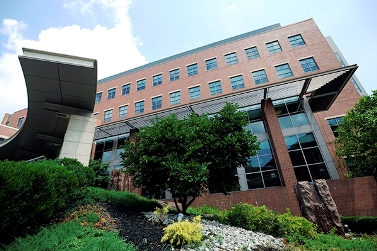The Bioinformatics Program at Rutgers Cancer Institute of New Jersey, the state’s only National Cancer Institute-designated Comprehensive Cancer Center, plays an integral part in the center’s precision medicine program helping to bring personalized medicine to patients in a timely manner. The Program needs to determine what mutations from a tumor are relevant to a particular therapeutic option, bringing the right treatments to their patients faster. With over 14 years of experience in genomic science, bioinformatics expert, Jeffrey Rosenfeld, PhD is helping Rutgers Cancer Institute to lead this charge. Being a bioinformatics expert, Rosenfeld is tasked with helping to set up a clinical pipeline that best meets the testing needs of the facility. As the facility prepares to be a high volume testing facility, choosing the right testing pipeline is critical.
When weighing the option between creating a pipeline in-house and choosing a commercial solution, Rosenfeld decided to consider commercial solutions for a couple of reasons. “We could have taken a few tools and wrapped them together”, he said. “But then we are responsible to maintain the system. By choosing a commercial solution, I can count on an entire team of programmers to keep the system updated. On top of that, the cost of an additional high-end programmer to help support an in-house system is more than the cost of a commercial solution.”
“Being an informatics person, my job is to set the system up”, said Rosenfeld. “Now that it’s up and running the molecular pathologist can run the samples. I am there as a resource to help and work through issues, but now they do not need an informatics person to run every sample.” “Normally we use a 5% minor allele frequency cut-off. But if we want to look and see if there are any variants for 3%, like a BRAF, that we want to take a look to see if something pops out we can. We like the fact that we can tweak things and adjust things.”
The lab’s clinical pipeline begins by taking a tumor sample through FFPE extraction and running the DNA against a 50 gene hotspot panel from RainDance. This panel utilizes 50 genes with the most relevant mutations for cancer that tend to have the most drug targets associated with them. From there, the samples go onto an Illumina MiSeq and are run through BaseSpace for sequencing and variant calling.
With the primary and secondary analysis complete, a tumor sample’s VCF file is imported into VarSeq where it is automatically annotated against industry leading data sources and run through the lab’s preconfigured VarSeq workflows. Repeatable workflows can be created in VarSeq by setting and locking down filtering parameters specific to the lab’s requirements for the particular test being run. These repeatable workflows not only reduce human error, but they also allow for the high-throughput environment by allowing staff to very quickly filter thousands of variants down to just the 100-150 variants of interest. This list of pathogenic or likely pathogenic variants is then exported to an XML file and sent off to N-of-One for interpretation.
When the file arrives at N-of-One, their team of experts provide variant analysis and clinical interpretation. This service assists testing labs and clinicians in making the best therapeutic decisions possible for patients. N-of-One’s report provides gene-, variant- and disease-specific information related to each patient’s molecular profile, including information related to potential therapeutic strategies. This brings effective treatment plans to patients sooner by eliminating the time exhausted when a physician is searching literature for therapy options.
When N-of-One’s XML file arrives back at the cancer center, the file will then be uploaded into VSReports where the final report is generated. VSReports is highly customizable which allows the lab to tailor the software’s provided report templates to their specific needs. When the final report is generated, it is checked out by the master pathologist and sent to the treating physician.
Dr. Jeffrey Rosenfeld completed his doctoral research at Cold Spring Harbor Laboratory where his work focused on histone modification in human cells via the analysis of ChIP-seq data. His work at Cold Spring led to one of the first papers published on ChIP-seq. After completing his doctorate, Rosenfeld moved to Zucker Hillside where he joined Dr. Todd Lencz’s laboratory where he was in charge of all next-generation sequencing analysis at the hospital. His work at Zucker Hillside involved family-based exome sequencing, RNA-seq of cerebrospinal fluid (CSF) and the analysis of genome association data especially in regards to computationally intensive tasks. Rosenfeld also studied the occurrence of multiple nucleotide polymorphisms (MNP) in the human genome and supervised the study of non-traditional human variants such as MNPs and polymorphic SNPs for the 1000 Genomes Project. Today, Dr. Rosenfeld assists researchers and clinicians across Rutgers University and at the CINJ through the High Performance and Research Computing group. Rosenfeld also has a long-standing collaboration with the Museum of Natural History where he and colleagues recently published the bed bug genome.
